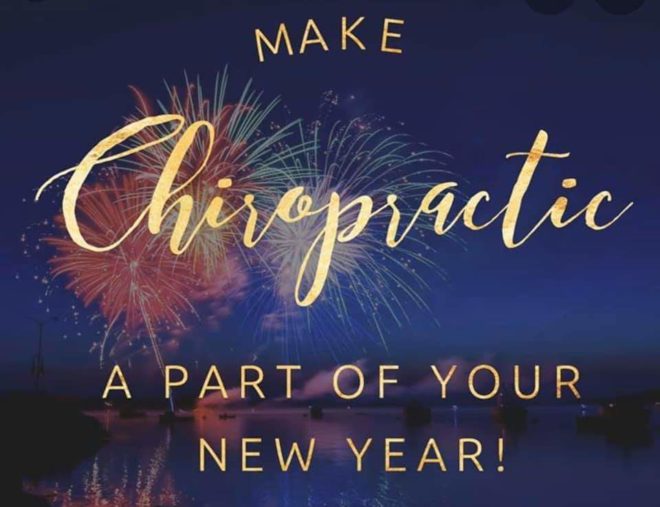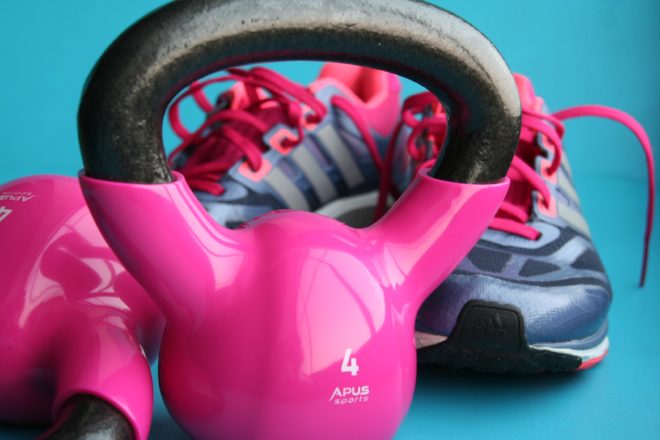
Clinic News
Firstly, the team would like to wish you all a very very happy new year - welcome to another decade! We want your vision for 2020 to be 20/20 so let us help you make your health 20/20 too. Look out for exciting new articles over the next few months sharing some top tips of ways to get healthy stay healthy and keep pain free.
In this issue read on about more reasons why you should try and keep those new years resolutions: Get fit, stop smoking, sleep better and eat better all lead to the new 2020 you!!
After what can only be recorded as a marathon of a months with Sophie and Troy away, Alex has not only seen a record number of patients but had the opportunity to meet many who have been coming to the clinic for years and their paths have never crossed - what a lovely cohort of patients we have! It has been an honour to have the opportunity to keep you going over the holidays! However, she saw a record number of very poorly patients too, the day’s emergency lists just kept getting longer. As a result of this the general consensus was that patients had missed their routine check-ups because they thought they were alright and their old problems have caught up with them. There is very strong newly published evidence that regular maintenance care can reduce that risk of misery and costs you less in the long run.
Here's the link if you want to read more:
https://chiromt.biomedcentral.com/articles/10.1186/s12998-019-0283-6
Alex, Troy and Lucy will continue to support Sophie's patient until her return in the spring. If you have any concerns please do not hesitate to call us first.
OUT OF HOURS PHONE LINE It has come to our attention that the emergency help line number has been disconnected thanks to EE so we can only apologise to anyone who has been trying the number of the holidays and unable to connect for some advice. We are working of using a different method to contact a chiropractor when the clinic is closed. It will likely be that you can access the chiropractor directly from the answerphone via a call forwarding system.
Advanced notice of a day closure: Thursday 13th February 2020 the clinic will be closed during the day as we are having a team first aid training day. There will be no reception cover until 5pm that day and a short clinic will be run by Alex and Troy from 5-8pm.

Exercise: The New Prescription
These days doctors often ‘prescribe’ exercise as a way to maintain good health and with good reason. Being active not only makes us feel better, it can also help ease various symptoms and cut risk of disease.
Studies have shown that people in their late 70s who undertake at least 20 minutes of exercise per day need fewer prescriptions and are less likely to be admitted to hospital than those who don’t [1]. Exercise has been shown to be as effective at lowering blood pressure as certain medication, as well as being shown to improve heart and gut health, memory and balance. The National Institute for Health and Care Excellence (NICE) recommends exercise 3 times per week between 45min to an hour, for 3 months for those with mild or moderate depression. The physical activity also stimulates our brains and helps prevent anxiety and stress, as well as increasing the lifespan and improving the quality of life.
- For Living Longer – Jogging
A US study showed that adults over 65 who ran or jogged for at least 30 minutes 3 times per week were as healthy as young adults in their 20s [2]. This might not sound important, but your walking style is a key indicator of mortality, so the longer you can stay spritely on your feet, the longer and healthier your life should be. Meanwhile, another study found that light jogging (between 70-120 minutes per week) was linked to the lowest mortality rate compared to sedentary people and heavy runners – so little and often is key here [3].
- For Improving Memory – Dancing
A study from 2017 found that all exercise can help reverse the signs of ageing in the brain, but dancing more than any other sport [4]. The study, which focused on adults in their late 60s who took part in a weekly dance class, found that all participants showed an increase in the hippocampus region of the brain, which can be affected by diseases such as Alzheimer’s and dementia, as well as more general age-related decline.
- For Back Pain – Active Therapies
Many GP appointments are connected to muscle and nerve problems- and these are often based in the back. If you suffer with back pain, you will know that it can affect your movement and sleep and leave you feeling quite low. Luckily, help is at hand in the form of gentle stretching. Also, research shows that active therapies, such as chiropractic treatment, are a great option for managing back pain and to create optimal alignment, balance and symmetry.
- For Depression and Anxiety – Walking
Science agrees – walking outdoors (especially in groups) has been linked to a reduction in stress and a boost in mood, particularly for those who have just been through a negative life event such as serious illness or loss of a loved one. Brisk walks have also been shown to help women deal with the anxiety and stress that’s sometimes associated with menopause. Movement helps your brain to release endorphins, feel-good hormones that can reduce the perception of pain as well as depression or stress.
- For Bone and Muscle Health – Weight Training
Experts are increasingly suggesting a bit of strength training goes a long way when it comes to better bone and muscle health. As we get older, we start to lose muscle mass, which can leave us prone to falls, as well as making it easier to gain weight. So think of strength training as insurance for your later life. While this could mean leading to lift lightweights at the gym, it can also mean strength exercises using your own body weight – such as sit-ups or squats. It’s really never too late to start. A study of 90-year-olds found that 12 weeks of strength training improved their muscle tone, ability to balance, general power and walking speed.
Don’t forget 150 minutes (just over 21 mins daily) is the minimum moderate exercise the NHS recommends for adults to stay healthy! And the best part is, it’s freely available to most of us, small things make a big difference. Movement is the new medicine!
[1] https://www.ncbi.nlm.nih.gov/pmc/articles/PMC4889622/
[2] https://www.newswise.com/articles/new-study-jogging-keeps-you-young
[3] https://www.ncbi.nlm.nih.gov/pmc/articles/PMC4131752/
[4] https://www.sciencedaily.com/releases/2017/08/170825124902.htm

Smoking and Back Pain
Short-term relief, long-term pain
A recent study has revealed that smokers are three times more likely to suffer from back pain than those who do not smoke. [1]
Smoking slows down blood circulation and reduces the flow of nutrients to joints, which in turn damages tissue in the lower back. Smoking may also affect the way the brain sends pain signals to the body and therefore may increase the risk of pain.
While smoking is a difficult habit to kick because of how nicotine and tobacco trick the body into feeling good, no temporary pleasure is worth a life of pain.
Including exercise into your everyday routine is extremely important.
Exercise activates endorphins, chemicals in the brain, that can help you feel good and has the potential to decrease pain. If the pain is not subsiding than think about seeing a doctor to kick the smoking habit and a Chiropractor to help get the pain under control. The effects of smoking such as: heavy coughing, slowed circulation as well as growth and damaged tissues has the potential to increase the risk of back pain. The next time you are in agonising pain, think about choices you could make to improve overall health.
[1] https://www.nhs.uk/news/lifestyle-and-exercise/smoking-increases-risk-of-chronic-back-pain/

Sleep Well
80% of UK adults will experience back pain at some point in their lives – so what is causing it? With this rate being so high, it is important to highlight some of the everyday activities, which, if conducted wrongly, can lead to back pain. One of the main ones to focus on is sleep – everyone does it, so it is important to know how to do it properly!
Below are some of the sleep positions that can cause you pain:
- When sleeping on your front, your head is turned slightly to the side as not to suffocate completely. As a result, this can cause a large amount of strain on the neck, which could lead to pain throughout the day. This position also means that your spine is completely unsupported, which could lead to extreme back pain.
- When sleeping on your left side with your arms completely out, you are essentially restricting blood flow and putting a large amount of pressure on your nerves; which can result in soreness in the shoulders and arms. Like sleeping on your front, the spine is completely unsupported in this position and therefore could lead to both upper and lower back pain.
- Whilst sleeping in the foetal position is a favourite amongst many, it is actually one of the worst sleep positions because of its complete lack of support for the neck and spine. As a result of the curvature of the spine in this position, neck and back pain is extremely common.
These positions can ease back pain:
- By sleeping flat on your back, your spine is completely supported, which will help ease the pain caused to the neck and back. By keeping your arms by your side, you are reducing strain on the shoulders as well.
- If you continue to feel soreness in your back after sleeping on your back, try the exact same position but with a small pillow underneath your knees. This helps your body to maintain a healthy curve in the lower back.
- If you want to sleep on your side, you absolutely can by just making sure your arms are kept down by your side instead of being stretched outwards. This actually supports the spine in the position of its natural curve.

Eating to Beat Inflammation: 5 Tips
Inflammation: it’s a natural process that happens in our body to help us heal from injury and help our immune system fight off invaders.
But too much inflammation – or inflammation that lasts longer than it should – can be a problem. Most importantly for chiropractors, inflammation is a factor in many types of pain, including joint and muscle pain, arthritis, back pain, and pain from an injury that won’t go away.
Inflammation overload also plays a role in other problems such as skin conditions, and even in serious health conditions such as heart disease, diabetes and Alzheimer’s disease.
While there are many things that can contribute to too much inflammation, one factor we can control is what we eat and drink.
So, here are five food-related tips to help you keep inflammation at bay.
- Load up on colourful fruit and veg
Most fruit and vegetables have great anti-inflammatory properties, thanks to their unique ‘phytonutrients’ such as flavonoids and carotenoids. These compounds are often responsible for vivid colours of fruit and veg, so you’ll find tons of flavonoids in purples and reds (think red cabbage, berries and pomegranate) and lots of carotenoids in oranges, light reds, yellows and greens (e.g. carrots, squash, tomatoes, peppers, and dark green leafy veg such as kale and spinach). So, think about ‘eating a rainbow’ of fruit and veg – not just a cliché, especially when it comes to beating inflammation.
Ideally, eat more vegetables than fruit, as the sugars in fruit can add up. And eat wholefruit rather than drinking it in juice form.

- Eat lots of oily fish
Oily fish are anti-inflammatory superheroes thanks to the omega-3 fats they contain.
Oily fish include salmon, sardines, mackerel, anchovies, herring, trout and fresh (not tinned) tuna. Aim to eat three servings a week of one or more of these fish to build up your omega-3 stores.
Plant omega-3s such as those found in flaxseeds and chia seeds and their oils don’t have exactly the same benefits, as they provide a different type of omega-3. But they’re still healthy choices to include in our diet, and can be a substitute if you can’t eat fish.
- Keep it ‘real’
Generally speaking, the less you rely on processed foods, and the more you eat ‘real’ foods, the better.
‘Processed’ foods tends to mean anything that’s been made in a factory instead of being brought to you fresh or simply packaged. Processed foods also include junk foods, think supermarket baked goods, processed cheeses, most breakfast cereals, packet soups and ready meals. Junk food is not only generally low in natural vitamins, minerals and anti-inflammatory nutrients, they often contain added sugar or salt, as well as chemical additives.
‘Real foods’, include vegetables and fruit, whole grains such as brown rice, beans and lentils, unroasted nuts and seeds, and minimally processed animal foods such as eggs, fish, whole cuts of meat and pure cheese or milk.
- Switch your vegetable cooking oils
It is best to switch all refined cooking oils such as sunflower oil and anything labelled as ‘vegetable oil’ for more healthy options.
But how can they be bad for us, when they’ve long been touted as a healthy alternative?
Well, one problem is that polyunsaturated fats in their refined liquid form are quite fragile. When they’re heated to high temperatures during the refining process and cooking, they can easily become damaged. These damaged molecules may trigger more inflammation or ‘free radical’ damage in our own bodies when we consume too many of them.
The second problem is that vegetable oils tend to contain a very high proportion of omega-6 fatty acids. Now, while these are essential fats, when we get a lot of them in our diet, they can have an overall pro-inflammatory effect (i.e. encouraging inflammation), especially when we’re getting a lot more omega-6 than omega-3 fatty acids.
So what can you use instead of vegetable oil? Well, a good choice for cooking is coconut oil. It contains primarily saturated fats, which – contrary to what you might think – are actually the safest and healthiest fats for high-temperature cooking such as roasting, frying or stir-frying, as they’re stable and have a high smoke point.
Olive oil is a great option for lower-temperature sautéing and for drizzling on salads or using in dressings. Olive oil is made up primarily of monounsaturated fats, which are more stable than polyunsaturated, and has been linked to numerous health benefits – for our heart in particular.

- Spice it up
Many spices have natural anti-inflammatory activity, with winners including turmeric and ginger. Add them liberally to homemade curries and Asian dishes (use coconut oil rather than vegetable oils, of course!). Make them into hot drinks, such as homemade turmeric latte or fresh ginger tea; or find them in the form of herbal teas.
Tip: if you’re buying powdered spices, seek out organic rather than just settling for your average supermarket version for the greatest benefits. And note the colour of your turmeric: it should be an almost fluorescent orange-yellow colour if it’s a good quality one.
We treat all conditions that affect any muscle or joint in your body, from your head to your little toe! One of the most common complaints that we treat is back pain and Chiropractic is recommended by the government authority, the National Institute for Clinical Excellence (NICE) for acute and chronic back pain. Some of the other conditions that we treat are neck and headache, shoulder pain, leg and hip pain, knee and foot pain, sciatica and arthritis. Our registered Chiropractors all have at least five years of training. Treatment costs can be covered through most health insurers. If you are in any doubt, we are always very happy to talk with you on the phone to see if your condition will respond well to Chiropractic treatment. Call the clinic now to arrange an appointment time that works for you. 0115 9225085 If you would like to opt-out of receiving these newsletters please follow the unsubscribe link below, email alex@beestonchiropractic.co.uk or let us know at your next appointment.







